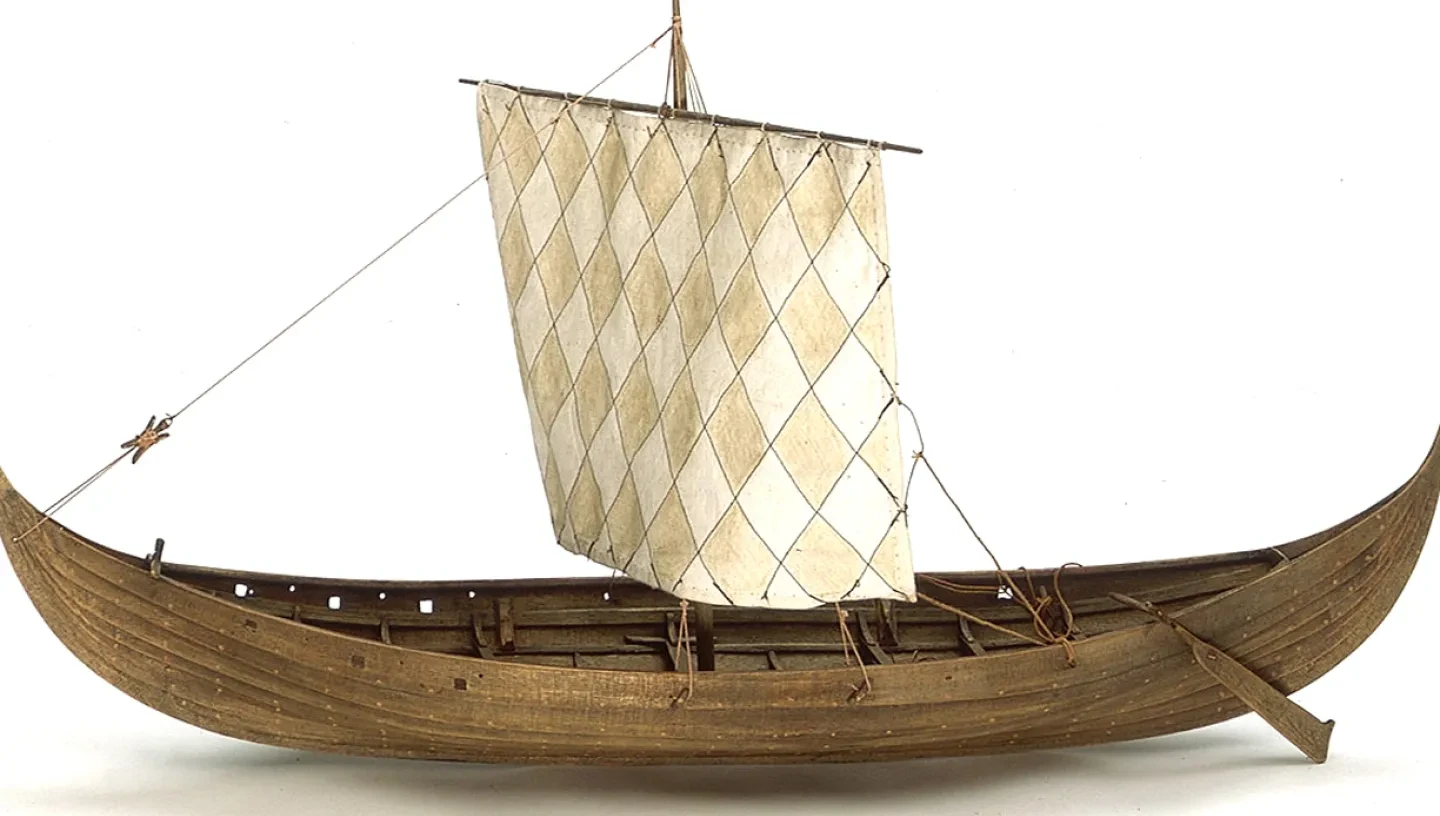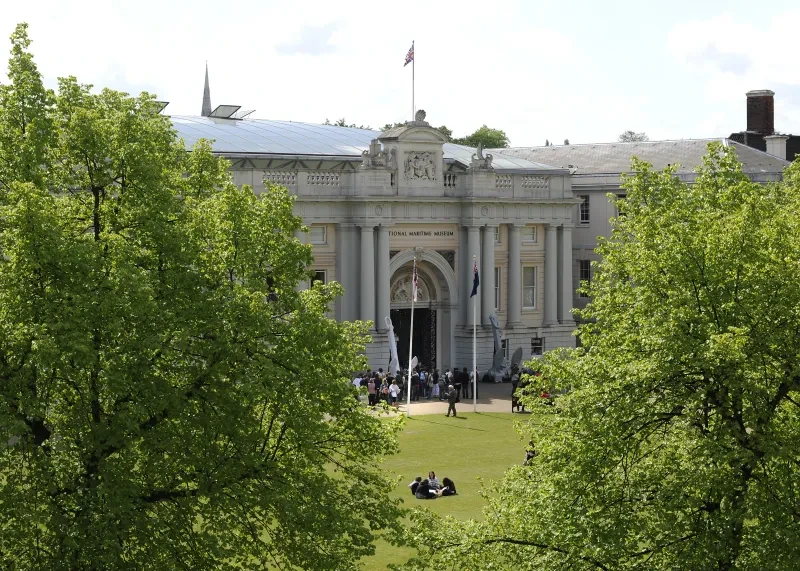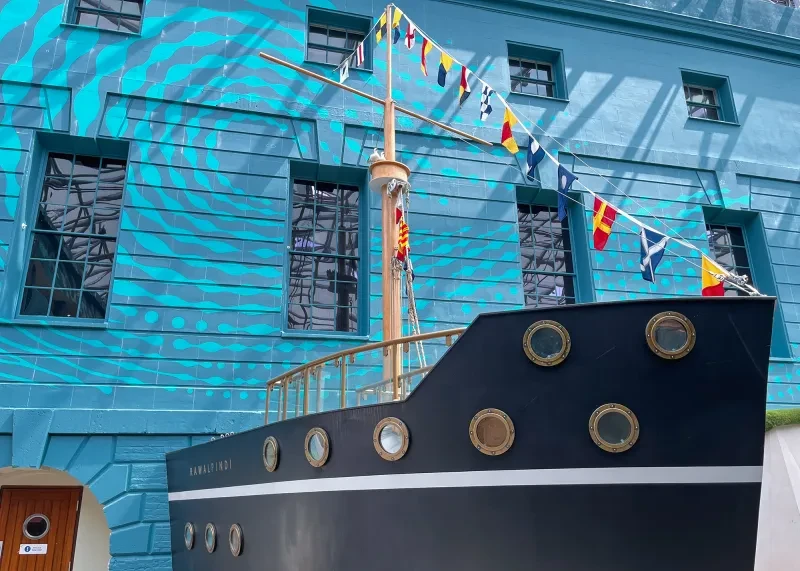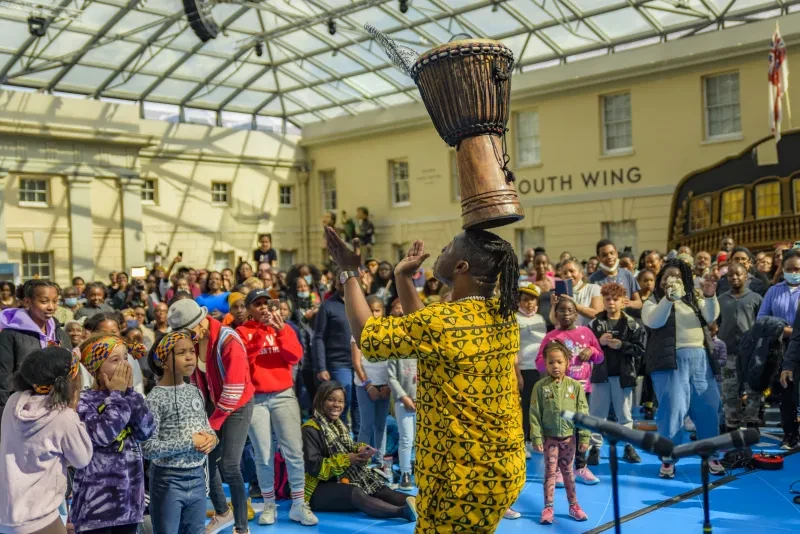
The ‘Vikings’ were seafaring raiders and traders from Scandinavia. The period known as the Viking Age lasted from AD 700 until 1100.
‘Viking’ was the name given to the seafarers from Norway, Denmark, Finland and Sweden. During the Viking age many Vikings travelled to other countries, such as Britain and Ireland. They either settled in these new lands as farmers and craftsmen, or went to fight and look for treasure.
How do we know about the Vikings?
Archaeologists have studied the remains of Viking farms, villages and towns and have put together a picture of how they might have lived. Graves have given us lots of information about the Viking way of life, because some important Vikings were buried with their possessions. Several buried or sunken ships have been found, and these have helped us to understand their seafaring technology.
What sort of ships did the Vikings have?
The Vikings built many different kinds of craft, from small fishing boats and ferries, to their famous longships. They were all made from planks of timber, usually oak, overlapped and nailed together. The ships were made watertight by filling the spaces between the planks with wool, moss or animal hair, mixed with tar or tallow. The ships were all the same long narrow shape, with shallow draughts. This meant that they could be used in shallow water.
Vikings used longships to make raids and carry their warriors. Often, the prow (front) of the ship was decorated with a carving of an animal head – perhaps a dragon or a snake.
Cargo vessels were used to carry trade goods and possessions. They were wider than the longships and travelled more slowly. Planked deck were only laid at the ends of the ship, so that space was left in the middle for cargo.
How did the Vikings ships move?
The ships were powered by oars or by the wind, and had one large, square sail, most probably made from wool. Leather strips criss-crossed the wool to keep its shape when it was wet. Viking ships also had oars. A steering oar or 'steerboard' was used to steer the ships. It was fastened to the right-hand side of the ship at the stern (back).
What was life like at sea for Vikings?
There was no shelter on these vessels. At night, Vikings might pull them up on land. They’d take the sail down and lay it across the ship to make a tent to sleep under. Or, they’d pitch woollen tents onshore. If the crew was far out to sea they’d sleep on deck under blankets made from animal skin.
Food would have been dried or salted meat or fish. It could only be cooked if the crew were able to land. They’d drink water, beer or sour milk.
The hardship of life on board, especially in rough seas, meant that Vikings did not make voyages in the winter but waited until spring.
How did the Vikings navigate?
Vikings did not use maps. They had lots of different ways of working out where they were and which direction to travel in. They looked at the position of the sun and the stars. They looked at the colour of the sea, the way the waves were moving and the way the wind was blowing. They looked out for birds and could smell if they were near land. It’s very unlikely that they had a compass, although some Vikings may have used an instrument called a sun-shadow board to help them navigate.
Where did the Vikings travel?
Viking traders travelled around the coast of Europe to trade. By sailing south along the lakes and rivers of Russia and Germany they were able to meet up with traders from Arab and Eastern countries. The Vikings made much longer journeys when seeking lands to settle, travelling to Iceland, Greenland, Canada and North America.
What goods did they trade?
Products that the Vikings exported from Scandinavia included walrus ivory, whalebone, and the furs and skins of animals such as fox, bear, beaver and otter. They also carried amber, a fossilized resin that was cut and polished to make beads, pendants and brooches. All these natural products were traded for goods in different countries.
In Britain, the Vikings wanted to obtain wheat, wool, honey and tin. They bought salt and wine from France, and glass from Italy. This glass was often recycled and formed into beads for necklaces. By travelling along Russian rivers, merchants from the east were able to provide the Vikings with luxuries such as silk, silver and spices.





